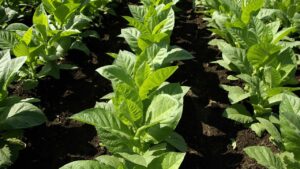Australian scientists have found a way to improve production of an enzyme essential to plant growth. The discovery advances efforts to improve global food security that aim to increase the yields of staple crops, such as wheat, cotton and rice.
“The enzyme Rubisco has baffled scientists for over 50 years, as it is thousands of times less efficient at its job than most other enzymes,” says Spencer Whitney, ARC Centre of Excellence for Translational Photosynthesis research team leader, a part of The Australian National University.
Much of the confusion stems from the highly complex structure of Rubisco — an enzyme with 16 pieces that requires the assistance of more than 12 other proteins for correct assembly.
“We focussed on one of Rubisco’s partner proteins, called RAF1. By supplying a Rubisco with its partnering RAF1, we found the amount of Rubisco produced in leaves could be more than doubled,” he says.
The study, published in the latest PNAS journal, shows Rubisco and RAF1 have evolved together. Changes in one protein, requires a balancing change in the other.
“We improved the production of a modified Rubisco in leaves by inserting a modified complimentary version of RAF1,” says Whitney. “Including RAF1 caused Rubisco’s levels to double, and as a result, we obtained faster rates of photosynthesis and plant growth compared to the plants where RAF1 was not introduced. The finding also explains why our prior attempts to insert more efficient versions of Rubisco from some algae into plant leaves have failed — they require different chaperones to those available in leaf cells.”












